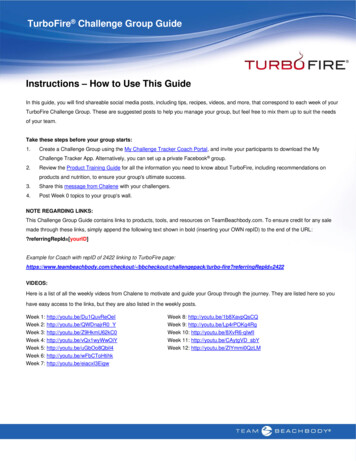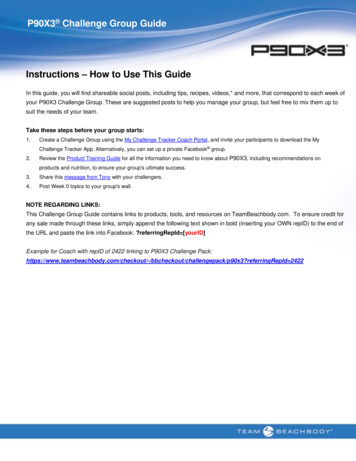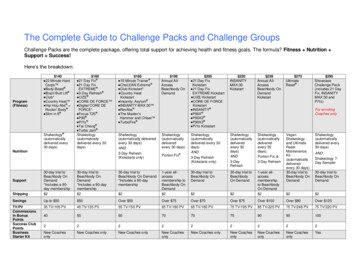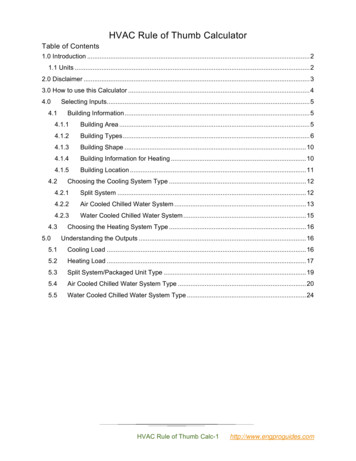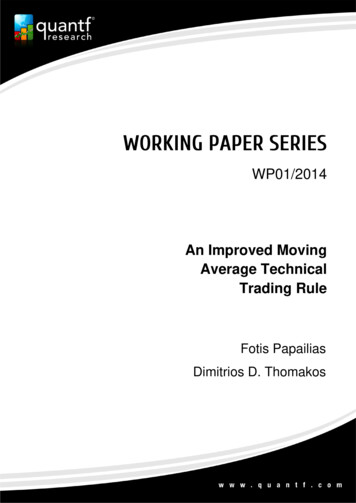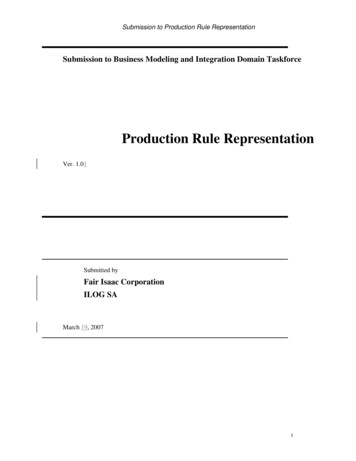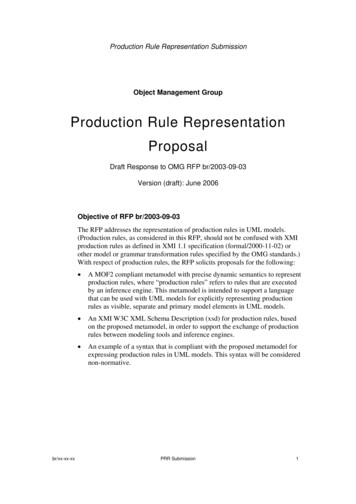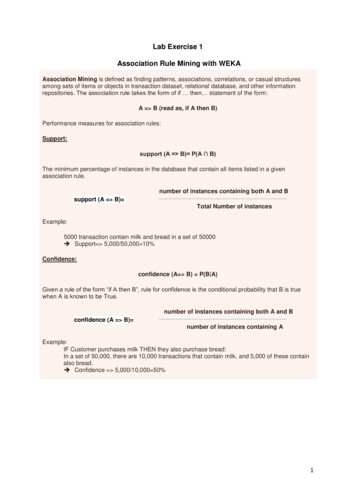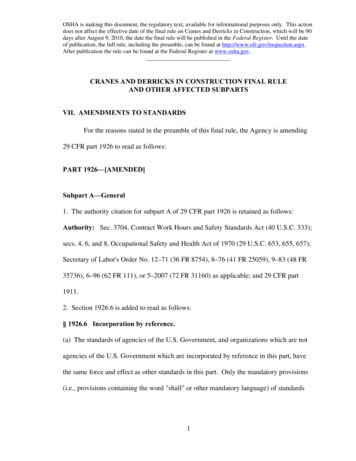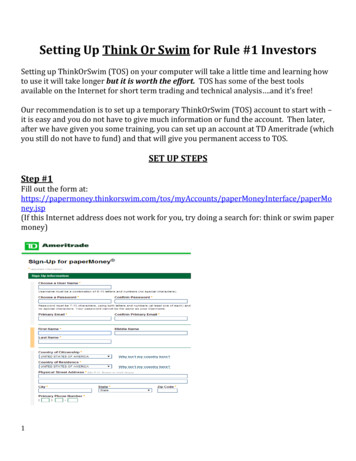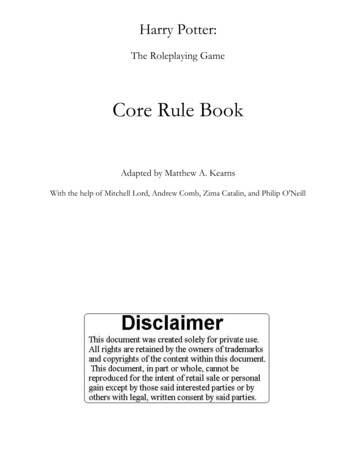Transcription
DM Rule Modeling Challenge Online Dating – Corticon – Mike ParishConsider the following situation. You have been approached by an online dating service that wants touse a rules engine to improve its process for matching people.Below is a brief explanation of the “business logic” behind their online dating services:Each person creates a profile defining their preferences.The rules check the profiles to determine all the possible matches for a person.The matches are scored. Higher scores indicate a better match.Scoring (once the matching criteria are met) is based on the age difference and the number of matchinginterests.Each profile includes:1. Name2. Gender3. City4. Age5. List of interests6. Minimum and Maximum acceptable age7. Acceptable genders8. Minimum number of matching interests.And here are the rules (applied to both persons):1. Gender of the other person must be one of the acceptable genders2. Age of the other person must be within the acceptable range3. City must match exactly4. Matching interests of the other person must match at least the number specifiedThey even provided an example of a compatible match:Jane (age 26, lives in Seattle, interests are skydiving, knitting, reading) is looking for a male age 28-32with at least one of those interestsJim (age 29, lives in Seattle, interests are skydiving, soccer, knitting) is looking for a female age 24-29with at least two of those interestsNote that the rules must apply both ways between the two people.
The ProcessStep 1 will try all possible pairs of people to see which ones match on location, age and gender. Whentwo matching people are found, a possible match record will be created that refers to the two people.Step 2 will examine each of the possible match records from step 1, calculate the number of sharedinterests and check that they are acceptable to both people. A score will also be calculated based on thenumber of shared interests and the age difference. A larger score means a better match.Step 3 sorts the matches (best first) and generates a simple reportA Possible Scoring Algorithm1. If both minimum interests are met then score 10* number of shared interests / (agedifference 1) [avoids division by zero]2. If only one minimum is met then score smaller minimum / (age difference 1)3. If neither minimum then score 0Depending on whether age difference or number of interests was the more important factor you mightchange this formula.
Match Persons Based on Location, Age and GenderNatural language representation (effectively a specification)A possible implementation where criteria1 and 2 refer to the selection criteria for person1 and 2.Rule statements that generate audit trail messages might look like this:Attributes enclosed in {} will be replaced by actual values at run time.
Match Interests and Calculate a Score
The VocabularyThe data passed to the rules will be in this form:The rules will apply the matching logic and createinstances of Match where appropriate:Commentary on the Data ModelSome of the other vendor solutions use a flattened data structure. For example the attributes of theCriteria object could be defined at the Person level. This works fine as long as you only want to allow aperson to have a single search criteria record. If you define the data structure as a one to manyassociation between Person and Criteria then you allow someone to have many different searches,possibly in different locations (without any change to the rule model).Similarly, interests can be flattened as an attribute of Person. But then you are faced with a morecomplex problem of parsing the string which contains the various free-form interests with some sort ofdelimiter.In contrast we can easily do this with gender since there are (in this model) only two genders (m,f) todeal with. This enables us to use the “contains” operator in this .gender)This works providing gender is constrained to be m or f. If the person was allowed to enter a word like“female” then this would match both m and f.In this model all the interests are given equal weight. But it’s possible to allow a person to attach moresignificance to certain interests simply by adding a “weight” attribute to the Interest object. This issomething that’s harder to do with the flattened data model.
Test CaseThis has Jane and Jim from the challenge description, but we’ve also added Tom (age 31) to show howthe scoring worksThe rules produce these conclusionsJane-Tom gets a lower score (3.33) than Jane-Jim (5.0) because of the greater difference in ages.
Variations and EnhancementsThe model currently requires all the persons that are to be considered for matching to be in memory. Ifwe had millions of people this could be a problem. And it might take a long time to try every pair.One simple solution is to modify the Corticon rule sheet that does the matching on location, age andgender to load only the relevant person data from a database based on location (and possibly age). Thiswould reduce the number of candidates for the matching considerably.We’d send a single person to the rules (the “searcher”) and based on that would load potential mates(“searchees”) that would then be processed by the other rules. This is most likely how it would work ifwe were using an iPhone app as the user interface for the search. The searcher’s details would be sentto Corticon on the server and a list of potential matches would be sent back. Configured in this mannerthe Corticon server could support hundreds or thousands of searches simply by allocating more CPUs tothe server as needed.The only changes to the original rule model required to convert to a database solution are as follows:1. Create a database schema to match the vocabulary (Corticon can do this automatically)2. Modify the scope and filters on the Person matching rule sheet to accommodate databaseaccess3. Run the rules with database access set to READ orREAD/UPDATEHere’s what the modified scope and filter would look like:Notice that the Person with the little disk icon is the“someone” being searched for in the database whereas thePerson designated “searcher” is the one that was passed intothe rules to drive the search. The filters with the disk icon showthat the query is processed on the database side.The rules themselves don’t need to change (they don’t careabout or need to know the source of the data) except for usinga different alias to the Person object to distinguish thesearcher from someone being searched. So now instead of comparing NxN pairs of people, we only needto compare X (where X N; X is the size of the set with location matching the searcher)
DM Rule Modeling Challenge Online Dating – Corticon – Mike Parish Consider the following situation. You have been approached by an online dating service that wants to use a rules engine to improve its pr
